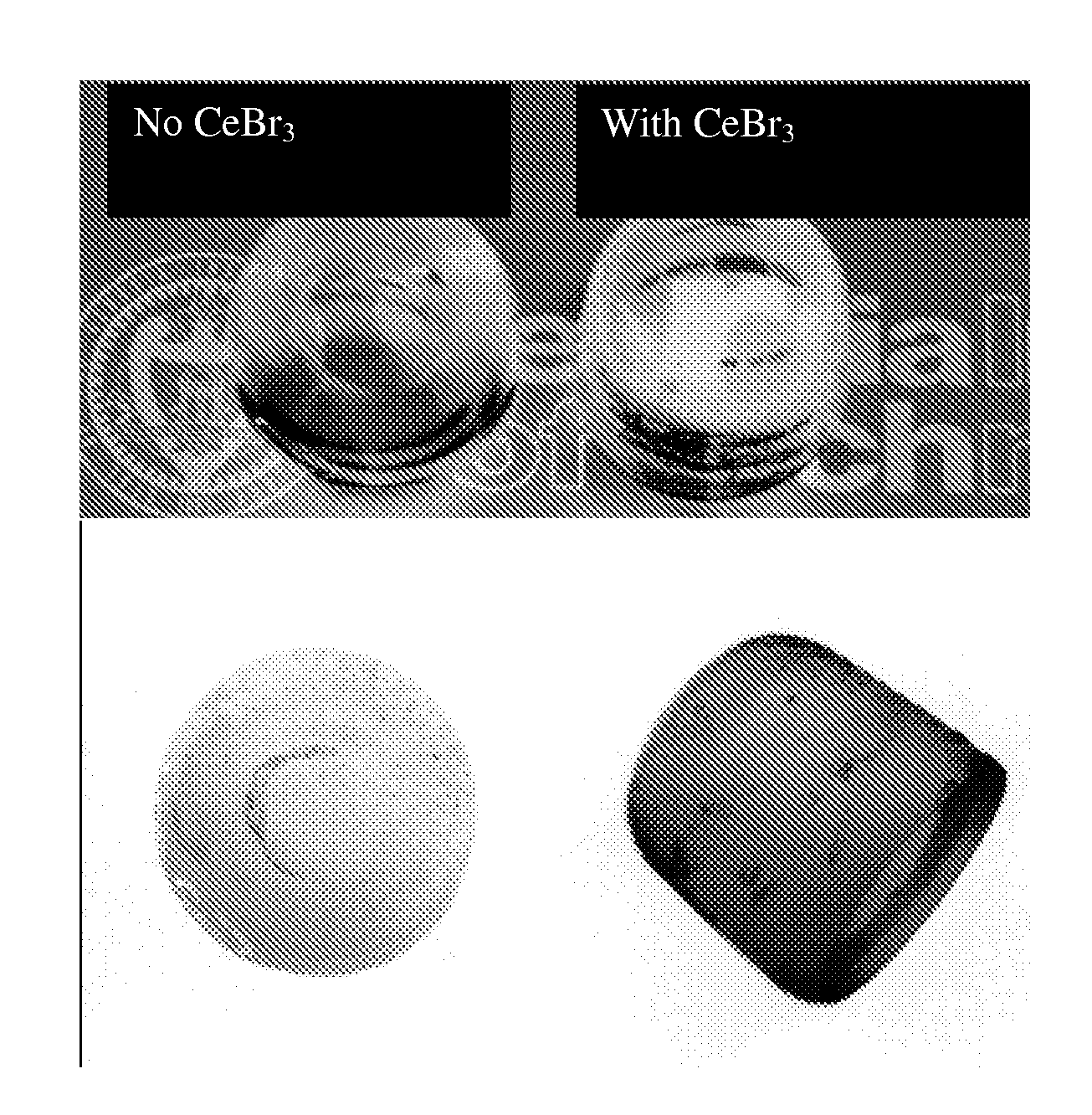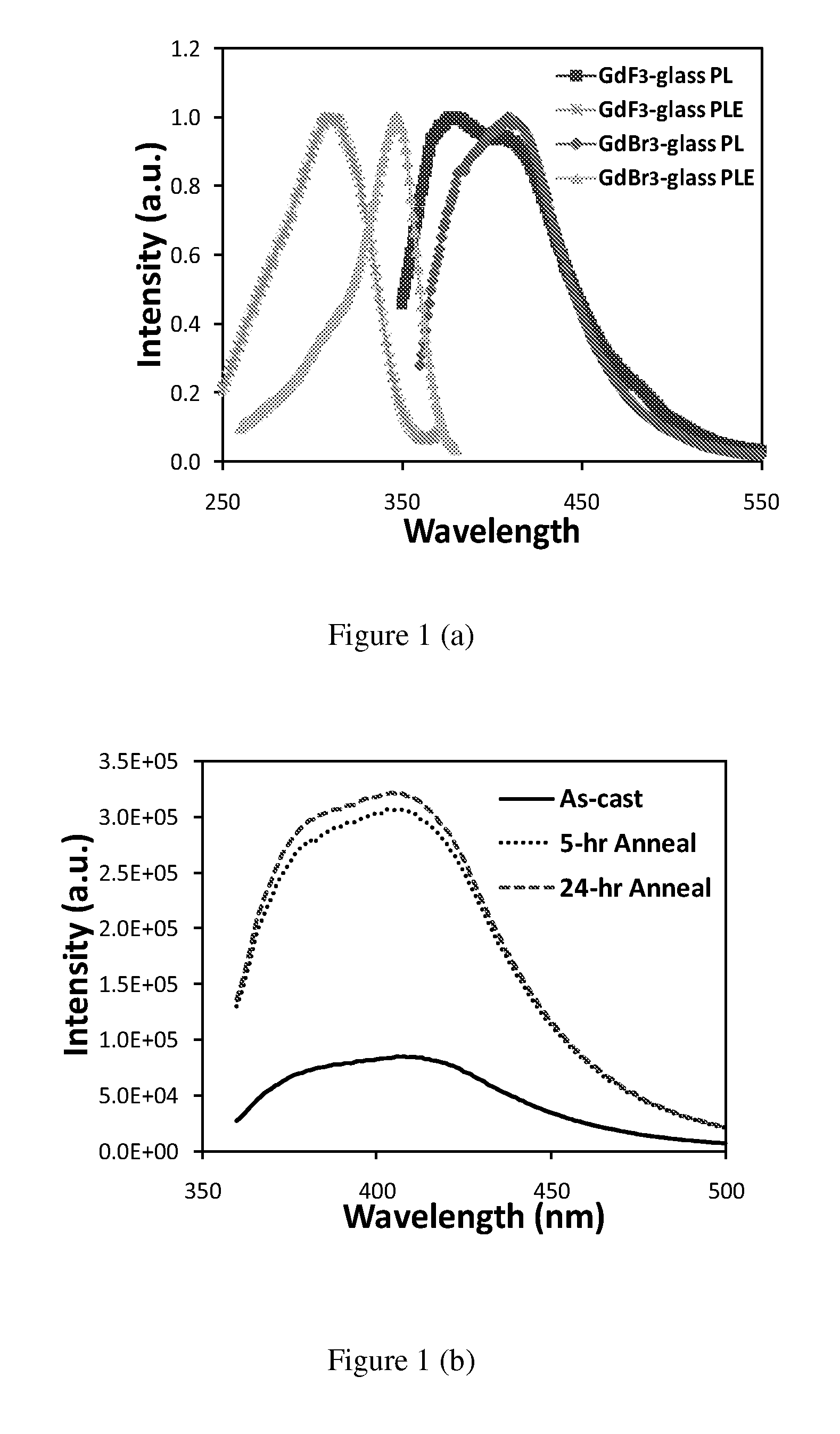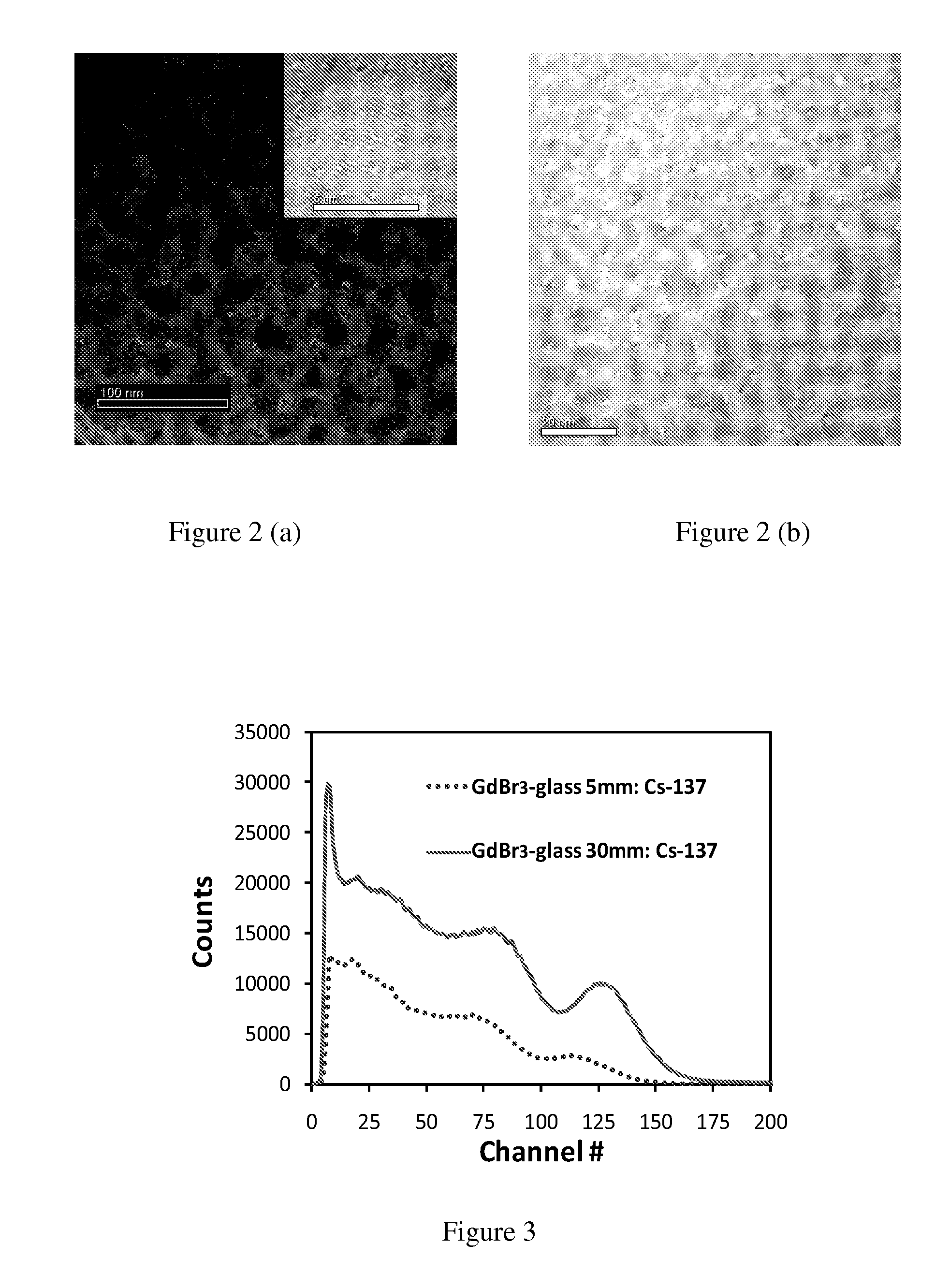Transparent glass scintillators, methods of making same and devices using same
a scintillator and transparent glass technology, applied in the field of transparent glass composites, can solve the problems of inapplicability to other forms of nuclear radiation detection, inapplicability to non-ideal conditions, and the resolution of solid-state detectors that exceed the resolution of inorganic crystals, but so far are limited in size or require operation
- Summary
- Abstract
- Description
- Claims
- Application Information
AI Technical Summary
Benefits of technology
Problems solved by technology
Method used
Image
Examples
example 1
Cerium Doped Gadolinium Halide
[0084]Powders of high-purity grade gadolinium halide and cerium halide were mixed with conventional glass forming chemicals: SiO2, Al2O3 and NaF at a molar ratio of 50SiO2-16Al2O3-19NaF-13GdX3-2CeX3. (X can be fluoride or bromide). Each batch weighed from 10 to 40 grams and was contained in a graphite plate covered alumina crucible. Samples were heated in an argon atmosphere at 200° C. for 1 hour and then melted at 1450° C. for 1 hour to form a homogenous liquid mixture. The samples were then quenched to room temperature by directly casting the melt into a preheated graphite mold of 2.5 cm in diameter. The cast precursor glass samples were subsequently annealed at temperatures between 450° C. and 750° C. to release thermal stress and promote nanocrystal precipitation.
[0085]Cylindrical glass composite samples with different halide compositions were fabricated and characterized in this work. Photoluminescence (PL) and Photoluminescence Excitation (PLE) sp...
example 2
General Method for Preparing Silicate Glasses of Cerium Doped Gadoliuium Bromide
[0094]The same basic method was used to synthesize all glass systems with a general composition of SiO2—Al2O3—NaF—GdBr3—CeBr3. The following constituent powders available from Alfa Aesar were used for the glass synthesis: 2 μm SiO2 (99.5%), 3 μm gamma-phase Al2O3 (99.97%), NaF, GdBr3.XH2O (99.99%), and CeBr3.XH2O (99.999%). A “base glass” composition of 46SiO2-15Al2O3-17NaF-17GdBr3-2CeBr3 was used as a starting point for all investigations. Precise quantities of GdBr3 and CeBr3 were varied to observe the effects of different scintillating material concentration. Precursor powders were thoroughly mixed with a mortar and pestle and then packed into a 50 mL Al2O3 crucible, with powder batch sizes ranging from 50-130 g. The crucible was covered with a one-quarter inch thick graphite plate and placed in a high temperature muffle furnace. Additional crucibles filled with carbon powder and BaBr2 were also place...
example 3
Europium Doped Calcium Fluoride
[0118]A glass with the molar composition 45SiO2-20Al2O3-10CaO-25CaF2-0.1Eu2O3 (or EuF2) was prepared. Reagent grade SiO2, Al2O3, CaO, CaF2, and Eu2O3 (or EuF2) were used as starting materials. The batch was placed in a platinum crucible and melted at 1400° C. for 2 h. To obtain the europium ions in the divalent state, carbon black powders were placed beside the crucible during the glass melting process. However, weak blue and strong red luminescence was observed from the prepared glass and glass composite samples, indicating most of the Eu ions were oxidized into Eu3+ states. The melt was cast onto a preheated, stainless steel plate, and subsequently annealed and cooled to room temperature. Glass composite was fabricated by heat treating the glass at 760 C for 3 h. The glass composite maintained a high transparency in the visible region. Luminescence spectra under UV excitation for the glass composite are shown in FIG. 19. The observed red emission pea...
PUM
| Property | Measurement | Unit |
|---|---|---|
| size | aaaaa | aaaaa |
| size | aaaaa | aaaaa |
| size | aaaaa | aaaaa |
Abstract
Description
Claims
Application Information
 Login to View More
Login to View More - R&D
- Intellectual Property
- Life Sciences
- Materials
- Tech Scout
- Unparalleled Data Quality
- Higher Quality Content
- 60% Fewer Hallucinations
Browse by: Latest US Patents, China's latest patents, Technical Efficacy Thesaurus, Application Domain, Technology Topic, Popular Technical Reports.
© 2025 PatSnap. All rights reserved.Legal|Privacy policy|Modern Slavery Act Transparency Statement|Sitemap|About US| Contact US: help@patsnap.com



